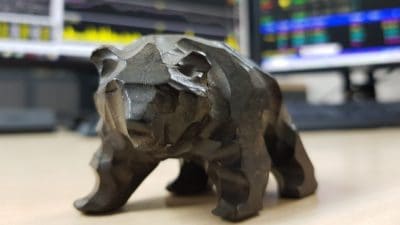Warren Buffett famously said that his favourite holding period is forever. This may seem rather extreme, but it’s clear that Mr Buffett hasn’t sought to become rich over a short period of time. Instead, he has bought shares in high quality, fairly valued companies and given them the time they need to come good.
This is in direct contrast to a great many private investors who aim to buy low and sell high as quickly as possible. While such a system may sound good in theory, in practice it seldom works on a consistent basis. That’s because it’s incredibly difficult to accurately predict the short-term price movements of shares, while dealing costs can also eat into returns over a prolonged period of time.
Therefore, while buying and holding may not be the most exciting of ways to go about investing, but it can lead to improved returns.
Make the most of downturns
Similarly, buying during downturns is another lesson private investors can learn him. He believes the time to get interested in a stock is when nobody else is, when it’s possible to buy shares at a discount to their intrinsic value. By doing so, it can provide a wider margin of safety for the investor and generate greater rewards and lower risk.
Of course, buying during a downturn is never easy. Without fail, every downturn always looks as though it couldn’t only get worse, but stay extremely challenging for a very long period of time. However, in every recession and crisis the stock market has always pulled through and surpassed its previous highs. Therefore, buying during even the most volatile and downbeat of trading conditions can boost portfolio returns in the long run.
One way to achieve the goal of buying during downturns is to focus on the facts and figures, rather than on news and views of other investors. After all, a sound business with a resilient balance sheet is more likely than not to survive even the worst of recessions, while following the investment herd has never been a sound means of obtaining high returns over a prolonged period of time.
Moats matter
Finally, private investors can also learn to seek out an economic moat from Warren Buffett. An economic moat is essentially the ability of a firm to maintain a competitive advantage over its rivals in order to protect its long-term profit growth. For example, an economic moat could take the form of a lower cost base than rivals, or a unique product which allows a company to maintain higher margins than its peers.
Certainly, an economic moat is no guarantee of future profitability, or of high investment returns. However, it does help to stack the odds in an investor’s favour and given a long holding period and a wide margin of safety from having bought during a downturn, this could lead to higher than expected total returns for private investors.







